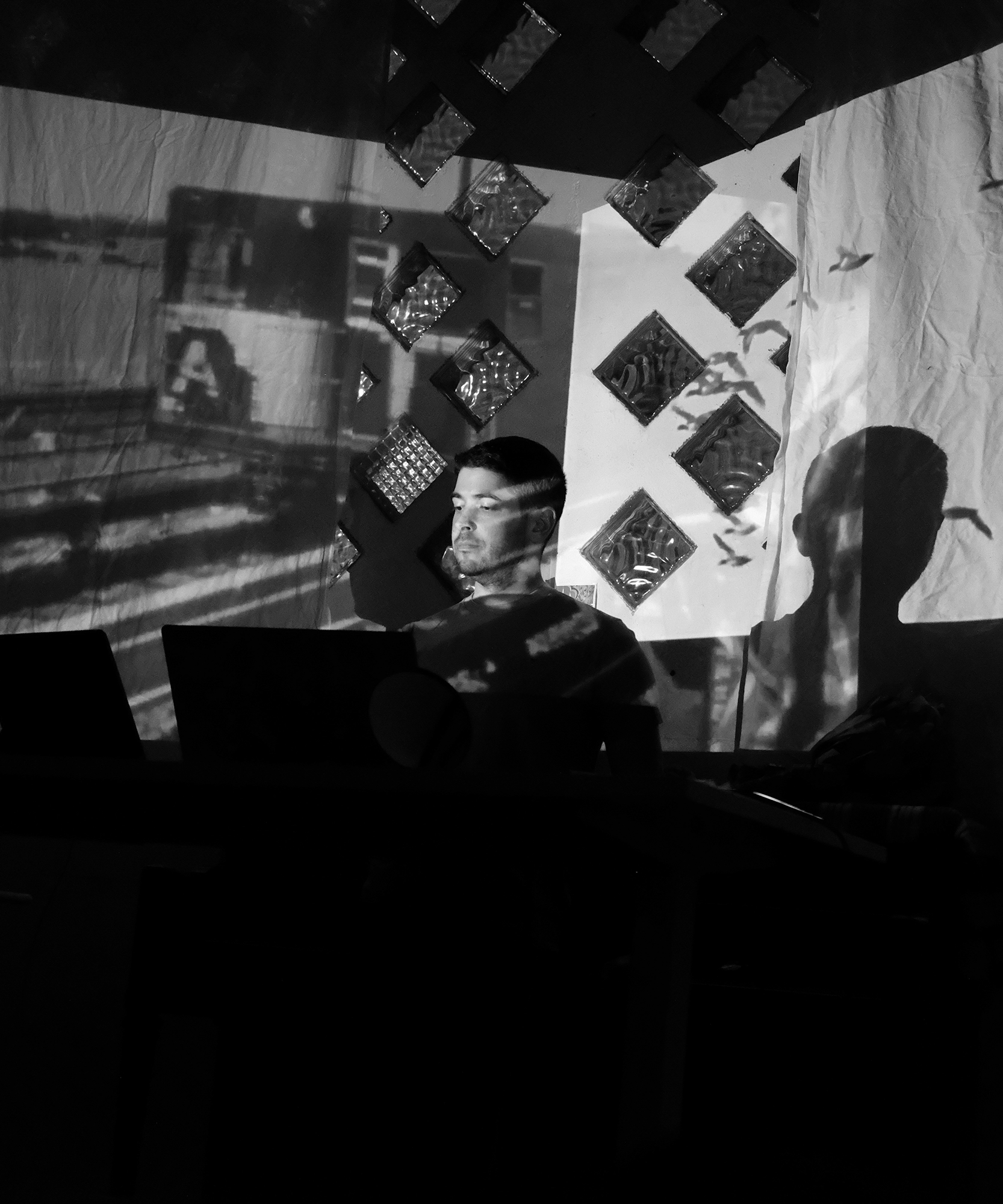"Harmonic resonance spans a vast range of spatial scales, from the tiniest wave-like vibrations of the elemental particles of matter, to orbital resonances that emerge from spinning disks of gas
and stars." —Stephen Lehar
and stars." —Stephen Lehar
—
In Silence They Sing is a series of works exploring the hidden resonant qualities of physical spaces. All spaces, like musical instruments, resonate when exposed to stimuli of particular frequencies, giving shape to our sonic landscape. To create these pieces, I played various samples into my bedroom through a pair of speakers, recorded the output, played the output back into the room, and recorded it again. I repeated this process many times until the room selected its resonant frequencies from the sample and dampened the others. The resulting sounds reveal the living, organic qualities of space.
To me, these sounds echo those I hear in complete silence, the "inner sound” generated by the resonance of the human auditory system itself. In this way, the works elicit a coherence between our inner and outer worlds, where the boundary between self and other blurs, and we hear our own souls reflected back to us from the space.
In Silence They Sing builds on the pioneering acoustic work of Alvin Lucier and extends it by experimenting with different input samples, layering various stages of the recordings on top of each other to form novel textures, and manually modulating the equalizer spectrum to guide the chaotic process toward particular forms.
Brown Noise
For this piece, I used brown noise as the input sample. Using noise as an input gives the truest representation of the resonant qualities of the space since it allows the space to select resonant frequencies from the full audible spectrum. Brown noise is a type of noise that has more energy at lower frequencies, as opposed to white noise, which has equal energy at all frequencies. In brown noise, frequencies are perceived as more psychoacoustically equal than in white noise because the human auditory system naturally amplifies frequencies at the higher end of the audible spectrum.
Chant
For this piece, I used a chant by the Gyuto Monks Tantric Choir called "Mandala Offering" as the input sample. Tibetan chants include strong resonant overtones, making a powerful effect on the listener. By layering the base sample on top of the space-selected resonant frequencies, this piece amplifies the effect of the chanting's natural overtones.
Hymn
For this piece, I used the song "Faith's Hymn" by Beautiful Choir as the input sample. Mirroring the swelling hum of the choir, the sample crescendos and decrescendos over the course of the piece on top of the resonant frequencies.
Cavatina
For this piece, I used a recording of Beethoven's "Cavatina" by the Emerson Quartet. I consider "Cavatina" one of the most beautiful pieces in the history of classical music, yet it was written by Beethoven after going deaf, bedridden with illness, and estranged from his family. The eery and discordant effect applied by the space mirrors the distance of the artist from his own work.


